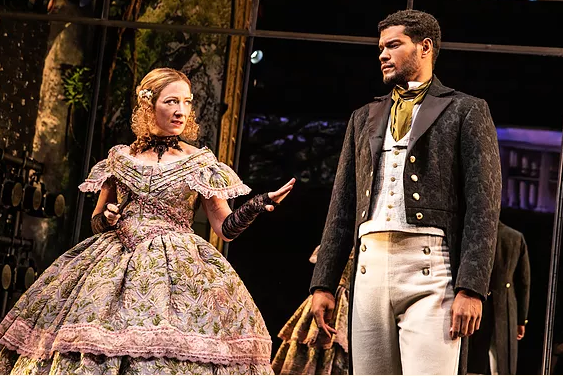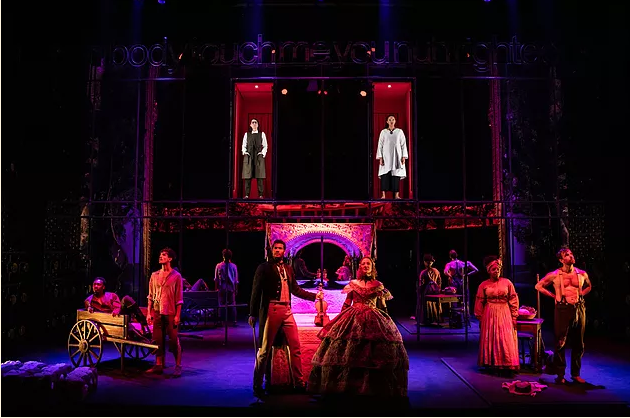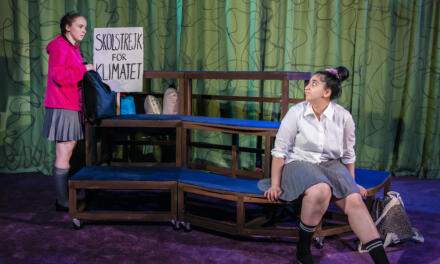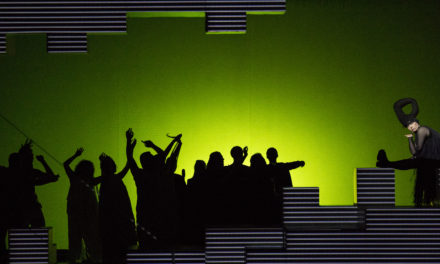Jeremy O. Harris’s Slave Play is the New York theater’s scandal du saison. It’s a play about race relations in America meant to ruffle feathers and it did that even in its first workshop version at Yale Drama School two years ago. The Yale scuttlebutt (tales circulated of strained friendships and hostile silences), along with social media buzz carefully cultivated by Harris, ensured that its downtown opening last year at New York Theater Workshop felt like a rehearsed explosion. The show, directed by Robert O’Hara, sparked a Twitter war and change.org petition protesting “disrespectful displays of anti-Black sentiment,” whose signatories (I imagine) must have been pretty chapped at inflating the work’s renown.
Now O’Hara’s production has moved to Broadway, heralded by a front-page “Arts & Leisure” feature headlined “Is Broadway Ready for Slave Play?”, and since I saw the show in both its downtown and uptown iterations, I thought I might weigh in, if only to distinguish the hoopla from the art.
Here’s my take. Slave Play, while genuinely and gratuitously shocking to some, has a thesis to propose about shock as cultural and personal therapy. Granted, I am white. But I believe everyone ought to consider the author’s thesis seriously before dismissing his work as offensive and illegitimate.
Slave Play presents interracial couples whose black partners suffer from “anhedonia” (failure to feel pleasure) acting out racially charged domination scenarios dressed in antebellum costumes. We learn this is a form of therapy.
Although these scenes are presented comically, I, for one, was stunned the first time I saw their flagrantly racist tropes. NYTW released next to no information before the play’s opening so everything was a surprise. I gasped, then laughed, then listened very carefully to the satirized, jargon-slinging therapists explaining the purpose of this activity. Afterward I considered the cast incredibly brave, throwing themselves into all the crassly inflammatory language and behavior with the gusto and verve of lighthearted farce.
Maybe it was callous of me to be so circumspect and avoid moral judgment on Harris’s racist display. He doesn’t just describe but avidly displays onstage the lingering erotic appeal that his characters say historical racism retains even for educated, contemporary people. I accepted that idea for the sake of artistic argument in Slave Play and tried to follow the mad comic logic of how it plays out.
Black students and colleagues with whom I discussed the play last fall begged to differ, most vociferously women. Several told me at length that they couldn’t accept any comic or theoretical justification for Harris’s shocking scenes. Most didn’t support the change.org petitioner’s effort to shut the show down, but they considered those scenes socially destructive, not illuminating as distorting mirrors, because their crazy “what ifs” reduced black characters to degrading stereotypes and black history to humiliating, simplified scenarios. The world didn’t need any more examples of such toxic imagery, period.
Call it what you will—privileged, insensitive, intellectual—but I don’t see things this way. Harris strikes me as a very canny and worldly provocateur: well-read and sharply tuned in to many sorts of convenient life-lies. Slave Play is practically a homage to one particular classic provocateur with similar attunements: Jean Genet. It repurposes Genet’s sort of theatrical provocation for anomalously sincere American ends.
Slave Play’s structure closely mimics Genet’s The Balcony. Both plays begin with a series of sexual roleplaying scenes whose context isn’t explained until later. Only after Genet’s lurid opening scenes featuring a weirdly sleazy Bishop, Judge and General do we learn that the Balcony is a brothel where customers pay to enact fantasies of powerful social figureheads whose “real” counterparts are flattered by the requests. Only after Harris’s brazenly degrading interracial sexual encounters in the first three scenes of Slave Play do we learn that they’re part of a therapy program. While watching them (especially for the first time), we’re meant to be puzzled, titillated, and offended by them.
The absurd therapy center in Slave Play is a sort of reinvention of The Balcony‘s brothel. Both institutions cater to clients’ erotic desires while regarding themselves as forces for melioration and stability in the “real” (outside) world. That world is threatened by a rebellion in Genet, and by the persistent corrosive effects of historical racism in Harris. Clients seek refuge and succor in both retreats, only to find that the crises outside have wormed their way in. The settings are both microcosms of their outside worlds, offering magnifying histrionic activities that reveal those world’s deeper values and social assumptions. Slave Play even shares with The Balcony the weakness of growing needlessly windy in its verbose middle section.
There is one crucial difference. The whole histrionic construct is a game and a technique to Jeremy Harris. For Genet, it is the nature of reality itself. Genet was a criminal, orphan, and prostitute who believed that all identity was performed, reality just endless layers of sham. Harris is a well-adjusted ivy-leaguer climbing the ladder of celebrity fast, who clearly believes in a grounded reality and reliable distinctions between truth and falsehood. He is wholly sincere, I presume, in suggesting that the wacky yet troubling confrontations with racist eroticism he depicts could be a catalytic force to heal black psyches.
This became clear to me within 20 minutes of the Broadway remount of O’Hara’s production. The main difference between the downtown and uptown versions of Slave Play is in degree of realism. The actors uptown are playing those inflammatory opening scenes in a wholly new way. At NYTW they inhabited the antebellum characters in an enlarged way as if straining to make them convincing. When the scenes got hot and active, they deliberately played up the farce, mugging and posing for the audience. It was easy to understand, because of that, why some found the piece disrespectful and exploitative.

Slave Play on Broadway, 2019. Photo Credit: Matthew Murphy.
The actors on Broadway make no attempt to convince us that their sexplay roles are real. They mug and pose only for their partners, as part of their negotiated foreplay, and they even drop character sometimes to check in with their couple-reality. There’s no doubt at the Golden Theater that we’re witnessing consensual roleplaying. At NYTW there was, and that made for an edgier and more dangerous experience.
It’s worth pointing out that the appearance of a lot of spoilers online and in print since the NYTW run has changed audience expectations. O’Hara, I suspect, redirected these scenes to account for the fact that the racist provocations can’t be wholly a surprise anymore. In any event, all the play’s relationships are more nuanced now, the steps in their painfully revealing journeys much more realistic. The show has a credible psychological connective tissue that it lacked before and therefore seems deeper and less intent on courting scandal just for scandal’s sake.
Oddly enough, Slave Play comes off as a more wholesome enterprise at the Golden Theater than it did at NYTW. It’s now, to me, very obviously an invitation to think and heal rather than rage and riot, which was doubtful before. Genet would be a little appalled at the normalization of his asocial techniques. He was proud of his abjection and lubricity per se. I’d like to believe, though, that he’d also be a little proud that a work by black artists so intensely invested in his sort of erotic shock is in a position to make people uncomfortable on Broadway.
By Jeremy O. Harris, Directed by Robert O’Hara
Golden Theater (252 W. 45th St.)
This article was originally posted on October 18, 2019 on TheaterMatters at jonathankalb.com and has been reposted with permission. Read the original posting here.
This post was written by the author in their personal capacity.The opinions expressed in this article are the author’s own and do not reflect the view of The Theatre Times, their staff or collaborators.
This post was written by Jonathan Kalb.
The views expressed here belong to the author and do not necessarily reflect our views and opinions.


















